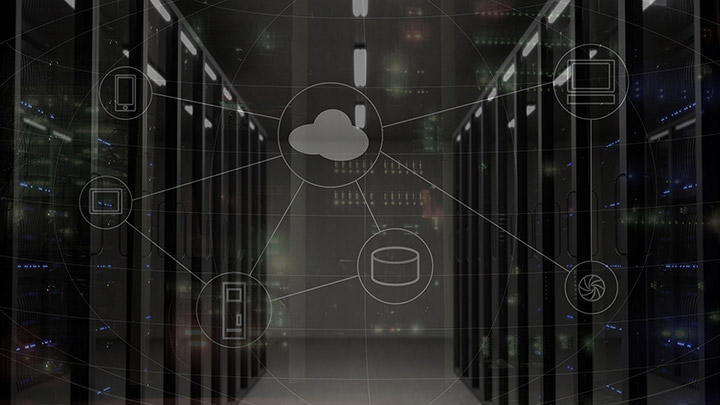With remote work expanding the attack surface, companies face evolving threats like ransomware and phishing that evade traditional antivirus and lead to costly breaches. Endpoint security as a service (ESaaS) provides next-generation protection powered by AI/ML to block new threats. Outsourcing to a specialized provider reduces costs and complexity compared to on-prem solutions by delivering security through the cloud. Evaluating ESaaS has become essential as attacks proliferate since the advanced threat detection and rapid response enabled by these solutions significantly reduce risk exposure.
ESaaS provides next-generation endpoint protection powered by advanced technologies like artificial intelligence and machine learning. Rather than scanning for known malware, signatures, it uses behavioral analysis to detect and block never-before-seen threats. ESaaS goes beyond antivirus to offer capabilities like endpoint detection and response, managed threat hunting, and automated incident response. Security teams gain continuous visibility into endpoints and can quickly contain attacks before they spread.
Outsourcing endpoint security to a specialized provider offers many benefits for resource-constrained organizations over traditional on-premises solutions. It reduces upfront costs, provides access to a 24/7 security operations center, and simplifies management with a single centralized console. As cyberattacks increase, evaluating whether ESaaS is right for your business has become essential to modern security strategies. This article provides an in-depth look at the key features, benefits, top providers, and factors to consider when selecting an endpoint security service.
The Evolution of Endpoint Security
Endpoint security has come a long way from the early days of basic antivirus software. Back then, the primary threat was viruses that attacked files and programs. So, the first antivirus tools relied on signature-based detection to scan for known malware strains. They’d compare files against a signatures database and alert you if a match was found.
This method worked well for a while but had some big limitations. Signature-based detection could only stop viruses it already knew about. So if a new piece of malware emerged, systems were defenseless until the next update added its signature. It could be better in today’s threat landscape, where new malware pops up constantly!
Another issue was that antivirus only protected against file-based attacks. As cybercriminals advanced, they developed fileless malware that lives solely in computer memory. Insider threats from careless or malicious employees can’t be stopped by scanning files alone. Perimeter defenses like firewalls are needed when companies embrace remote work and BYOD policies.
Key Features of Modern ESaaS
Modern endpoint security takes a more proactive approach to spotting never-before-seen threats. Solutions like endpoint detection and response (EDR) rely on behavioral analysis instead of signatures. They monitor endpoint activity for suspicious patterns that could indicate malicious behavior. For example, a Word doc spawning a Powershell process immediately could signify an attack in progress.
EDR and next-gen antivirus use machine learning and artificial intelligence to understand normal behavior patterns. Anything that deviates from the norm raises a red flag. Some systems can even take automatic actions to isolate endpoints that show signs of compromise.
This allows modern ESaaS platforms to detect and respond to threats that evade traditional defenses rapidly. And integrating with existing security tools provides even more context to accelerate incident response. But it’s still essential to have experienced analysts hunting for stealthy attacks across the entire environment.

Why Choose an ESaaS Model?
Transitioning to an endpoint security as a service (ESaaS) model offers a variety of benefits compared to traditional on-premises solutions. It eliminates the need to purchase, deploy, and maintain hardware and software independently. There’s no massive upfront investment or complex installation process. You subscribe to the service and install lightweight agents on endpoints.
This subscription-based pricing structure allows you to scale protection as your business grows. Adding more endpoints doesn’t require forklifting in expensive new appliances. Costs become an operating expense rather than a capital expenditure, which is easier to budget. And working with a specialized security provider gives you access to advanced threat protection at a fraction of the cost of building an in-house SOC team.
Outsourcing endpoint security also ensures you always have the latest protections and the expertise of the provider’s security analysts. New threat intelligence and detection algorithms are automatically pushed to your endpoints as soon as they’re available. So, you benefit from industry-leading technology without managing constant signature updates and version upgrades yourself.
How ESaaS Improves Security
ESaaS continuously monitors your endpoints, and experienced analysts rapidly validate threats. Suspicious events trigger automated containment to isolate compromised systems before damage spreads across the environment. Security teams gain full visibility to retrace the steps of an attack, determine impact, and guide the response. And with a 24/7 SOC, they can respond to incidents at machine speed.
Regular vulnerability scans and compliance reporting provide insight into risks and help strengthen security posture. Overall, the proactive threat hunting and rapid response enabled by ESaaS significantly reduce dwell time. And the advanced AI-powered detection stops many attacks that would fly under the radar of traditional defenses.
Key Factors in Selecting an ESaaS Provider
With the wide variety of endpoint security as a service (ESaaS) solutions available, it’s essential to evaluate providers to find the best fit carefully. The effectiveness of your program largely depends on choosing a partner that aligns with your specific needs and environment. Here are some of the top criteria to consider during your selection process:
- The breadth of security features – Look for EDR, next-gen antivirus, firewalls, web/email filtering, application control, and other core protections. Prioritize solutions with a comprehensive set of embedded controls rather than a mix of third-party tools.
- Detection and response capabilities – Evaluate threat hunting, behavioral analytics, and automation. Favor providers with proven expertise in rapidly validating and containing advanced attacks.
- Integration with existing tools – Review API and SDK options for connecting ESaaS data with your SIEM, SOAR, and other systems. This boosts visibility and allows orchestrating responses across products.
- Platform architecture – Assess whether the product is fully cloud-delivered or includes on-prem components. Cloud-native options simplify deployment but may have connectivity requirements.
- Pricing model – Compare per user, per device, or hybrid pricing. Calculate the total cost of ownership based on your environment.
- Support and training – Look for responsive technical support and access to security analysts. Factor in onboarding, ongoing education, and enablement.
Top ESaaS Providers
Some leading options to evaluate include:
- CrowdStrike Falcon
- Microsoft Defender for Endpoint
- SentinelOne
- Sophos Intercept X Advanced
- VMware Carbon Black Cloud
Do demos, trials, and proof of concepts to experience platforms firsthand. Weigh factors like performance impact and actionable insights. Integrate top contenders with tooling to test interoperability before deciding.

Key Takeaways
- ESaaS provides next-gen endpoint security powered by AI and automation
- Eliminates upfront costs of purchasing on-prem solutions
- Ensures you always have the latest protections and expert guidance
- Continuous monitoring enables rapid threat detection and response
- Outsourcing to a provider simplifies management and frees resources
- Choosing a solution aligned to your needs and environment is key
- Leading options include CrowdStrike, Microsoft Defender, SentinelOne
- Evaluating ESaaS helps strengthen defenses against modern attacks
Don’t Leave Your Business at Risk!
At ZZ Servers, we have provided comprehensive endpoint security to Virginia businesses for over 17 years. Outsource your cybersecurity to our experts and gain AI-powered advanced threat protection. Continuous monitoring enables rapid response to stop attacks. Simplify management, reduce costs, and focus on your core goals – not security upkeep!
Schedule a free consultation today at 800-796-3574 to evaluate your needs. Our knowledgeable team is ready to partner with you to strengthen defenses and protect your business from modern cyber threats. Call now and take control of your security!
Frequently Asked Questions
What is endpoint detection and response (EDR)?
Endpoint detection and response refers to solutions that monitor endpoints like laptops, servers, and mobile devices for suspicious activities indicating potential security threats. EDR uses behavioral analytics and machine learning to identify issues and enables rapid response to stop attacks.
How does Endpoint Security as a Service (ESaaS) improve my security posture?
Outsourcing to an ESaaS provider gives you access to advanced threat detection, automated response capabilities, and 24/7 monitoring and analysis from security experts. This level of protection is difficult and expensive to build internally. ESaaS strengthens defenses and reduces dwell time.
What factors should I consider when choosing a provider?
Look at detection accuracy, automation features, ease of deployment, platform architecture, pricing model, customer support, and integration with existing tools. Do demos and compare top contenders.
Does ESaaS fully replace antivirus?
Next-gen antivirus is typically included in ESaaS platforms. But traditional signature-based antivirus alone is ineffective today. ESaaS combines modern antivirus, EDR, managed threat hunting, and other controls.
How does ESaaS simplify security management?
With ESaaS, you avoid the cost and complexity of managing on-premises security infrastructure. Protection is delivered from the cloud, endpoints integrate seamlessly, automatic updates, and you get 24/7 support.


